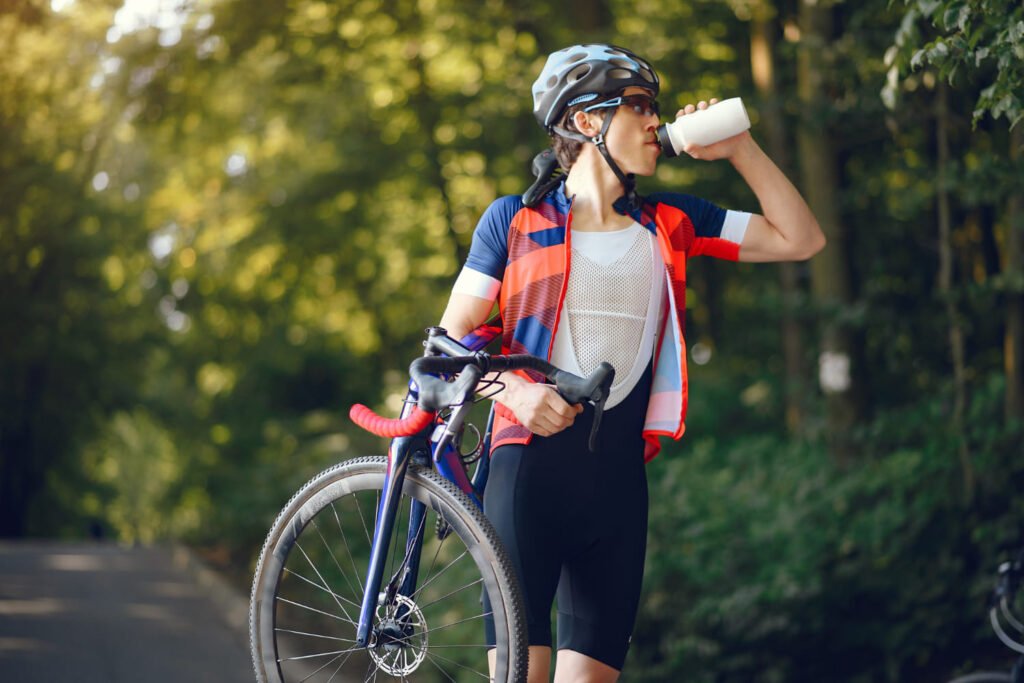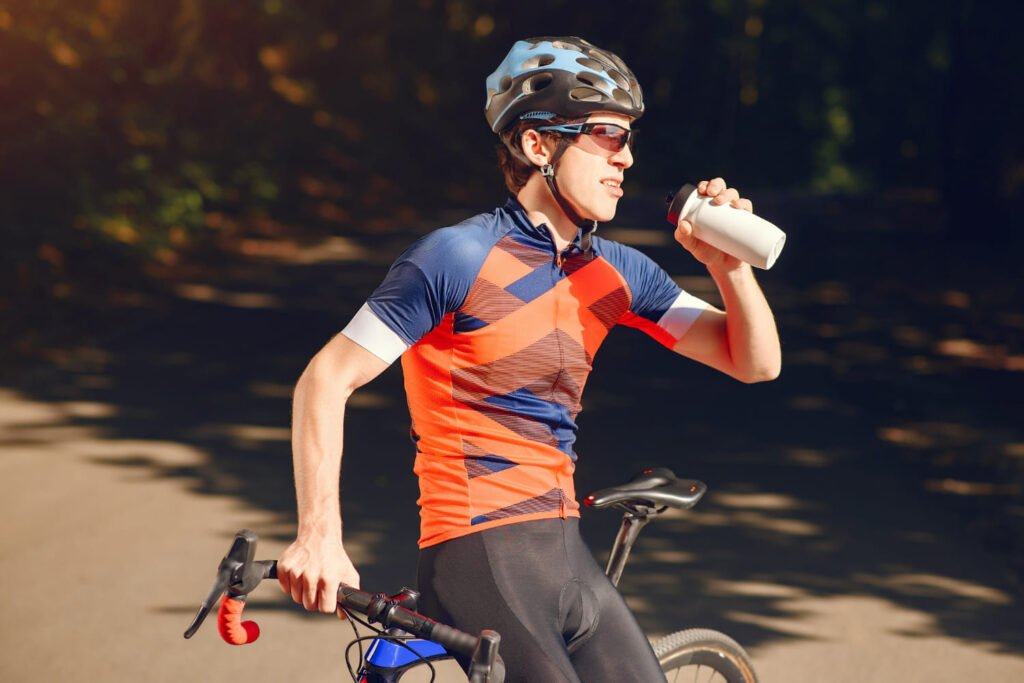The Best Fluffy Pancakes recipe you will fall in love with. Full of tips and tricks to help you make the best pancakes.
Best Hydration Strategies in Cycling
Water, electrolytes, and timing tips to stay hydrated during rides.
Staying hydrated isn’t just a side note—it’s one of the most important performance tools in a cyclist’s arsenal. Proper cycling hydration fuels endurance, regulates body temperature, supports muscle function, and keeps your mind sharp on the bike. Whether you’re climbing in the summer heat or logging base miles in cooler weather, knowing how to hydrate correctly can be the difference between a strong finish and a mid-ride bonk.
This guide breaks down hydration strategies before, during, and after your ride, along with tips for replacing electrolytes and avoiding common mistakes. It also shows you how to track sweat loss and personalize your approach for better results.
Pre-Ride Hydration: Setting Your Cycling Foundation

Starting your cycling adventure properly hydrated sets the foundation for optimal performance throughout your ride. Begin hydrating 1-2 hours before cycling with 500-750ml of water or electrolyte solution. This timing allows your kidneys to process excess fluid while maintaining optimal hydration levels. Waiting until you feel thirsty means dehydration has already begun affecting your cycling performance. Pre-loading with electrolytes becomes especially important for hot weather cycling or heavy sweaters.
Essential pre-ride cycling hydration strategies include:
- Timing window: Begin hydration 1-2 hours before cycling activities start
- Volume targets: 500-750ml of fluid for optimal cycling preparation
- Electrolyte addition: Include sodium for better fluid absorption during cycling
- Temperature consideration: Cool fluids absorb faster than warm options
- Individual assessment: Adjust volumes based on body size and cycling conditions
- Urine monitoring: Pale yellow indicates proper hydration for performance
This proactive approach prevents dehydration before it impacts your ride quality.
During-Ride Hydration: Consistent Cycling Performance Fuel

Maintaining consistent fluid intake during cycling prevents performance decline and supports optimal body function. Target 500-750ml per hour during moderate cycling conditions, increasing to 1000ml+ in hot weather. Small, frequent sips every 10-15 minutes work better than large volumes consumed sporadically. Your cycling intensity and environmental conditions should guide fluid intake adjustments. Starting hydration early in your ride maintains optimal fluid balance throughout.
Strategic during-ride cycling hydration includes:
- Hourly targets: 500ml cool weather, 750ml+ hot conditions for cycling performance
- Frequency timing: Small sips every 10-15 minutes during cycling activities
- Early initiation: Begin drinking within first 15 minutes of cycling
- Intensity adjustments: Increase intake during climbing or high-intensity cycling efforts
- Environmental factors: Hot, humid conditions require increased cycling hydration volumes
- Personal monitoring: Adjust based on individual sweat rates and cycling tolerance
This systematic cycling hydration approach maintains performance while preventing dehydration-related issues.
Electrolyte Replacement: Beyond Water for Cycling Excellence
Cycling hydration requires more than plain water, especially during longer or intense riding sessions. Sweat contains essential electrolytes including sodium, potassium, magnesium, and chloride that support muscle function. These minerals enable proper nerve transmission, muscle contractions, and cardiovascular function during cycling. Plain water dilutes remaining electrolytes, potentially causing hyponatremia and muscle cramping. Strategic electrolyte replacement maintains optimal body chemistry for cycling performance.
Effective cycling electrolyte replacement options:
- Commercial tablets: Nuun, SIS provide balanced sodium and potassium for cycling
- Sports drinks: Skratch, Tailwind combine carbohydrates with electrolytes for cycling fuel
- Natural options: Coconut water offers potassium-rich hydration for cycling recovery
- DIY solutions: Water, lemon, salt, honey create budget-friendly cycling hydration
- Sodium targets: 300-600mg per hour for optimal cycling electrolyte balance
- Individual needs: Heavy sweaters require higher electrolyte replacement during cycling
This comprehensive approach supports both immediate performance and long-term health.
Post-Ride Rehydration: Optimizing Cycling Recovery

Post-ride rehydration plays a crucial role in cycling recovery and preparation for future training. Replace 150% of fluid losses to account for continued sweating and kidney function. Weighing yourself before and after cycling provides accurate fluid loss measurements. Combining electrolytes with carbohydrates enhances fluid absorption and glycogen replenishment simultaneously. Continue gentle fluid intake for several hours post-cycling rather than consuming large volumes immediately.
Effective cycling recovery strategies:
- Replacement ratio: Drink 1.5x fluid lost during cycling sessions
- Measurement method: Pre/post ride weight difference indicates cycling fluid losses
- Enhanced absorption: Electrolyte and carbohydrate combinations improve cycling rehydration
- Extended timeline: Continue gentle intake for 2-4 hours post-cycling
- Recovery beverages: Chocolate milk, sports drinks support cycling rehydration goals
- Environmental consideration: Hot conditions require extended cycling rehydration periods
This systematic cycling recovery approach ensures complete rehydration and optimal adaptation.
Sweat Rate Monitoring: Personalizing Your Cycling Hydration
Understanding your individual sweat rate enables precise planning for different conditions. Weigh yourself before and after rides to calculate exact fluid losses. One kilogram of weight loss equals approximately one liter of sweat during cycling. This data helps customize hydration strategies for similar cycling conditions and intensities. Track patterns across different weather conditions and cycling intensities for comprehensive planning.
Advanced monitoring includes:
- Measurement protocol: Pre/post ride weights without clothing for accurate cycling data
- Calculation method: 1kg weight loss = 1L fluid loss during cycling
- Condition tracking: Record temperature, humidity, and cycling intensity variables
- Hourly rates: Divide total losses by ride duration for cycling hydration planning
- Individual patterns: Identify personal sweat rate trends for cycling optimization
- Adjustment factors: Modify intake based on environmental and cycling intensity changes
This scientific approach transforms guesswork into precise performance optimization.
Common Hydration Mistakes: Avoiding Cycling Performance Pitfalls
Several hydration mistakes can sabotage cycling performance and potentially create dangerous health situations. Consuming large fluid volumes rapidly can cause gastric distress and dilute blood sodium levels. Relying solely on water during long cycling sessions increases hyponatremia and cramping risks. Waiting until thirst develops means dehydration has already begun impacting cycling performance. These mistakes are easily preventable with proper cycling hydration education.
Critical cycling hydration mistakes to avoid:
- Volume timing: Avoid chugging large amounts; maintain steady cycling hydration intake
- Water-only approach: Include electrolytes for cycling sessions exceeding 60-90 minutes
- Reactive hydration: Begin fluid intake before thirst develops during cycling
- Temperature extremes: Very cold fluids can cause gastric cramping during cycling
- Alcohol interference: Avoid alcohol immediately post-cycling as it impairs rehydration
- Individual ignorance: Learn personal sweat rates and needs
Avoiding these cycling hydration pitfalls ensures optimal performance while maintaining safety standards.
Looking for more ways to support performance through nutrition? Explore our Cycling Recipes Guide for hydration-friendly meals, DIY drink mixes, and fueling strategies.





